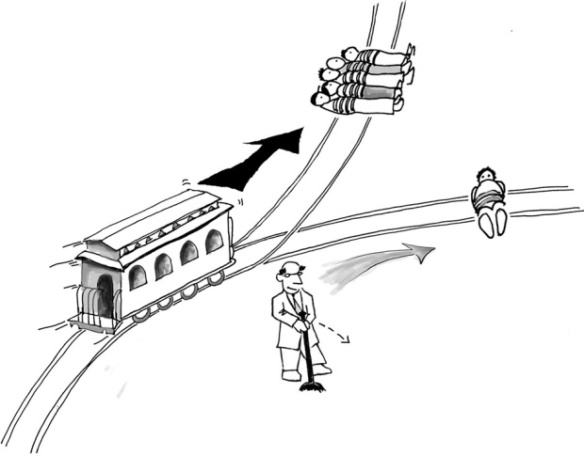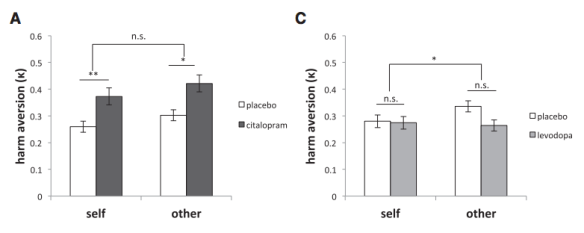This weekend the ExCeL centre in London hosted an event called New Scientist Live, which was aimed at the general public and invited speakers across various fields, including Brain & Body, Technology, Earth and Cosmos. Additionally, there were stands and interactive stations run by various scientific institutions from across the UK and Europe, including The Francis Crick Institute, the Royal Society of Biology and the European Space Agency, to name a few.
But, to be honest, I was already sold when I saw the giant bacterium (precise species is still a matter of debate; could be E. coli) hanging from the ceiling:

Apart from this excellent demonstration of how cool cells are I want to write about two highlights.
- The talk by Molly Crockett on “What makes us moral?”
Molly Crockett has a lab at the Department of Experimental Psychology, University of Oxford (but will be moving to Yale next year) where she and her research group study the neuroscience of “morality”. Dr Crockett’s talk was all-round excellent: from the clarity of her speaking, to the information on the slides, the science simplified enough to be understandable, yet retaining the references on the slides so that one can look up the original research (Crockett et al., 2014 and 2015, both open access!). The main finding of the 2014 paper was that people tend to be “hyperaltruistic”: when deciding whether to inflict painful electric shocks to oneself or another anonymous human being, the person deciding needed to be offered/paid more money to hurt another person. People also decided more slowly when the effects were to be felt by the other person rather than oneself. Importantly, and Dr Crockett emphasised this in her talk, these studies were conducted with real people and real electric shocks so that the results from their experiments might give us information about real life situations, as opposed to hypothetical ethical dilemmas. Possibly one of the most famous of these dilemmas is one in which a person needs to decide whether to save five people by actively sacrificing one, or to passively let five people die: In the 2015 paper the authors then go on to test whether various drugs – the antidepressant Citalopram, a selective serotonin re-uptake inhibitor and Levodopa, a dopamine precursor – can alter this moral decision making. Interestingly, the antidepressant reduced the overall number of electric shocks the deciders were giving out, both to themselves and to others. The hyperaltruism was preserved since deciders still gave fewer shocks to the receivers for the same amount of money. Levodopa, on the other hand abolished this hyperaltruistic effect:
In the 2015 paper the authors then go on to test whether various drugs – the antidepressant Citalopram, a selective serotonin re-uptake inhibitor and Levodopa, a dopamine precursor – can alter this moral decision making. Interestingly, the antidepressant reduced the overall number of electric shocks the deciders were giving out, both to themselves and to others. The hyperaltruism was preserved since deciders still gave fewer shocks to the receivers for the same amount of money. Levodopa, on the other hand abolished this hyperaltruistic effect:

Bar charts showing the effects of citalopram and levodopa on harm aversion – copied directly from Crockett et al., 2015
Obviously the talk and the papers go into much more detail, especially with the statistics used to evaluate these admittedly small effects. Lastly, it’s important to note that, as Dr Crockett pointed out, none of this means that researchers are working on, or should be working on, developing a “morality drug”…
- The science magazine Nautilus published by the MIT Press.
Nautilus starts where the New Scientist stops, namely, where things get really interesting. To me, the New Scientist poses similar questions to the ones I might ask, but often fails to really answer them or provide a satisfactory explanation as to why there is no answer (yet). When I do read its articles they often leave me with more questions than before, which, of course, isn’t a bad thing. However, after reading a few articles of Nautilus it seems that this magazine is more thought-provoking: the articles are longer and maybe more on the creative side, but retain the references at the end, and the style of writing is more enjoyable to me. For instance, an article called “The Wisdom of the Aging Brain” by Anil Ananthaswamy discusses the possibility that there are neural circuits, or certain regions of the brain, that, with training and age, allow us to become wiser.
So if any of my few readers is feeling particularly generous today then why not consider getting me the Sep/Oct edition…?
References:
Crockett MJ, Kurth-Nelson Z, Siegel JZ, Dayan P, Dolan RJ (2014) Harm to others outweighs harm to self in moral decision making. Proceedings of the National Academy of Sciences 111: 17320-17325
Crockett Molly J, Siegel Jenifer Z, Kurth-Nelson Z, Ousdal Olga T, Story G, Frieband C, Grosse-Rueskamp Johanna M, Dayan P, Dolan Raymond J (2015) Dissociable Effects of Serotonin and Dopamine on the Valuation of Harm in Moral Decision Making. Current Biology 25: 1852-1859
